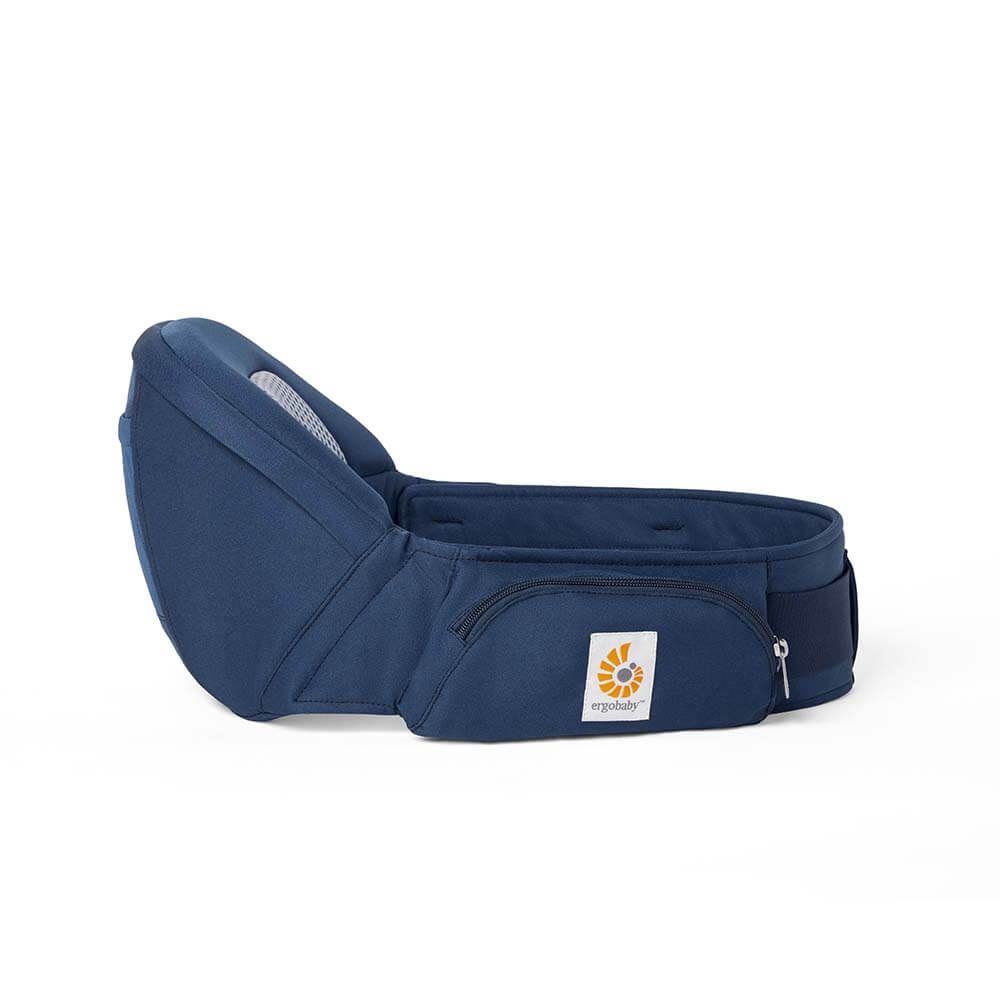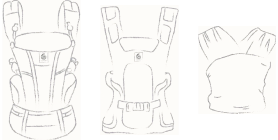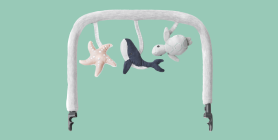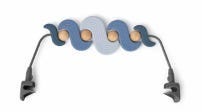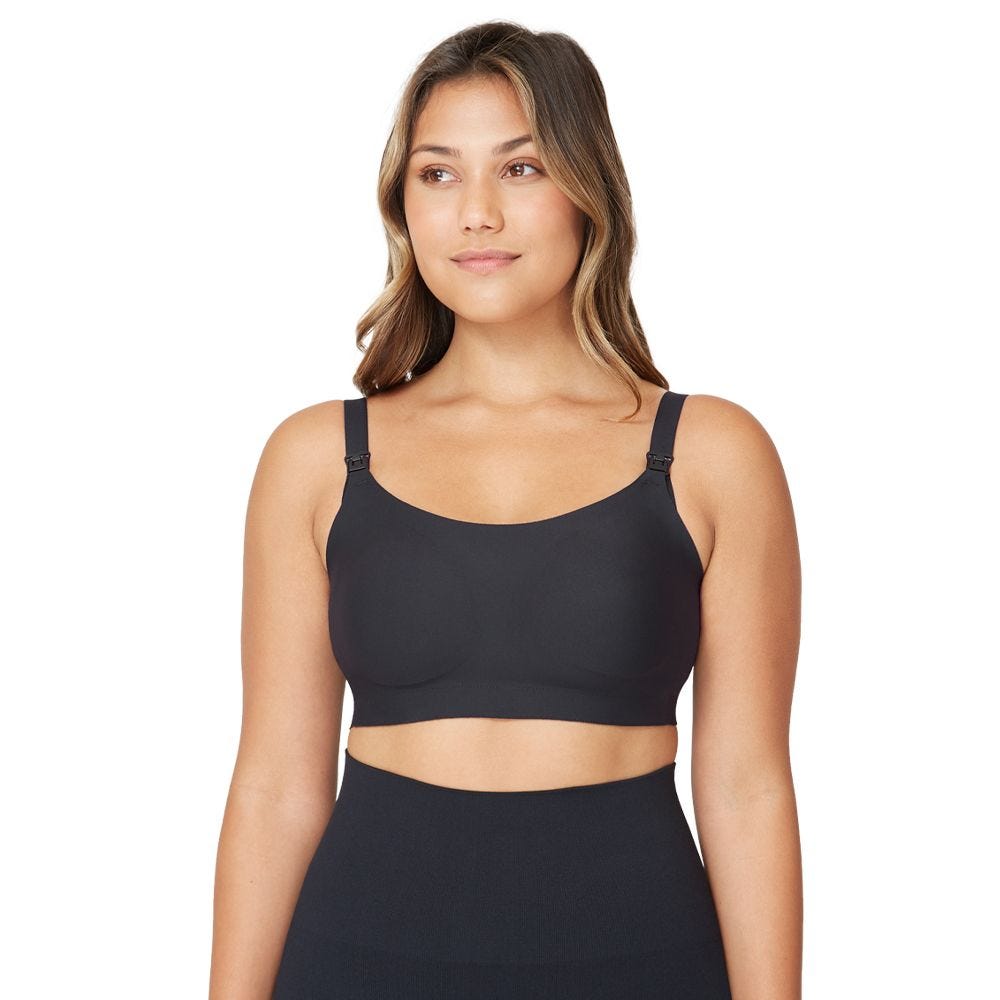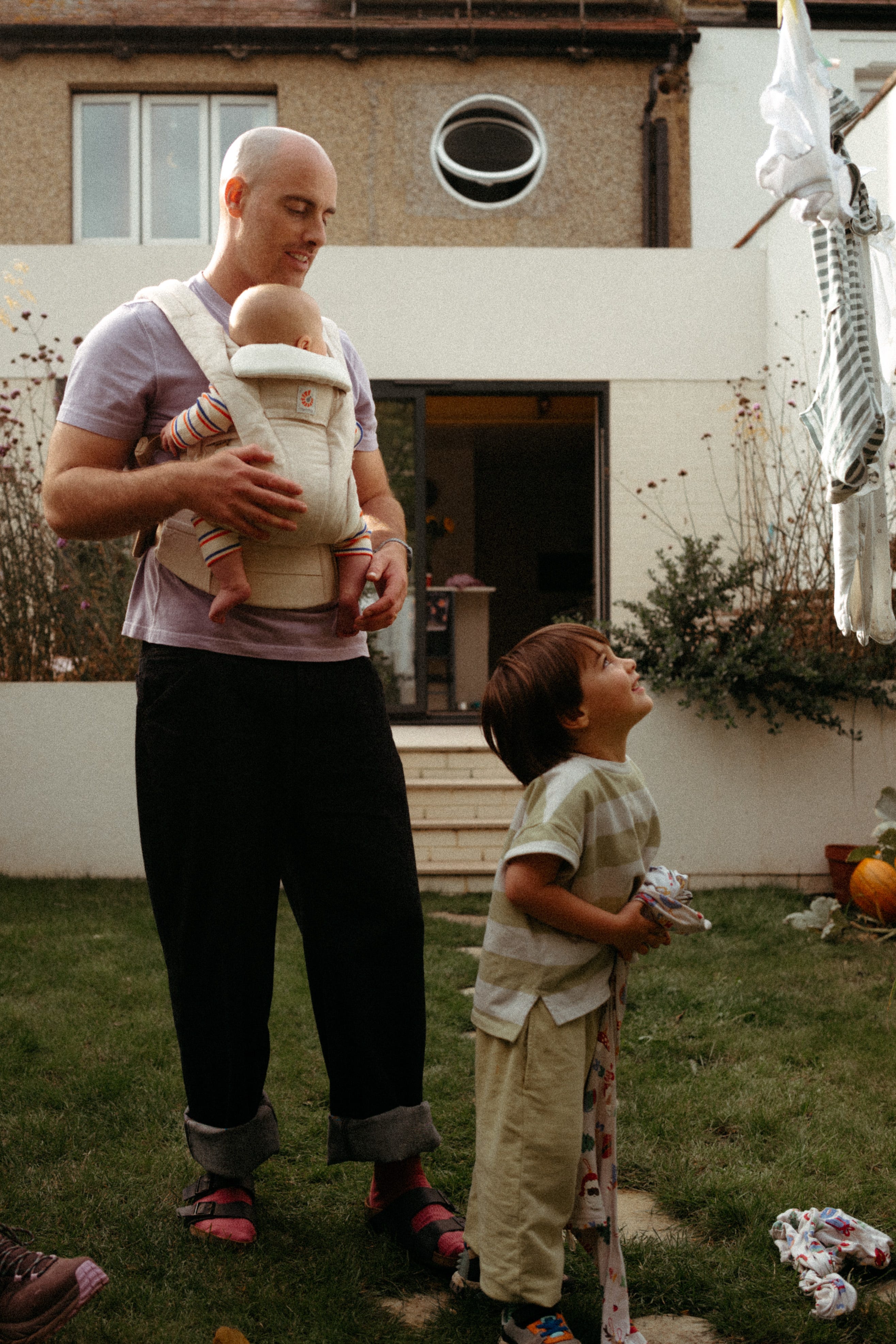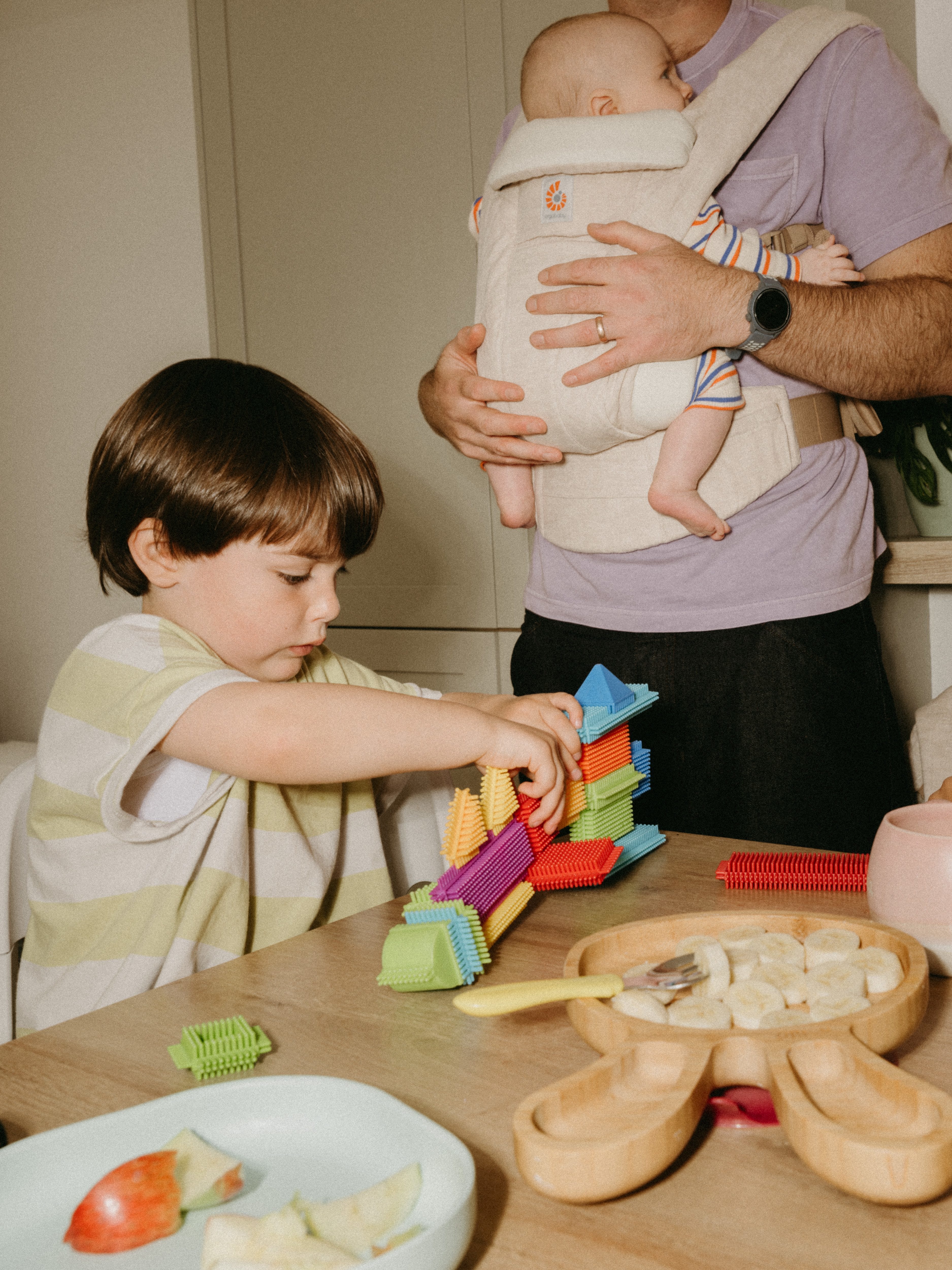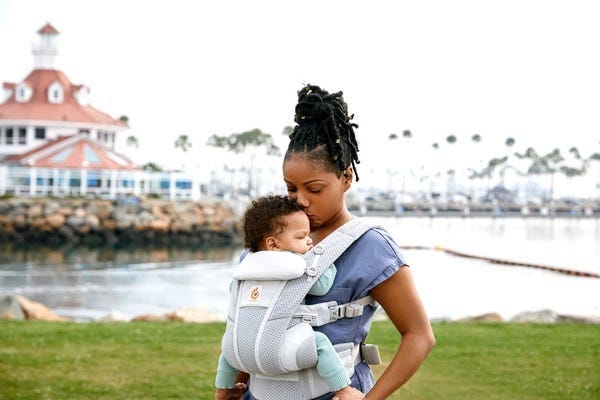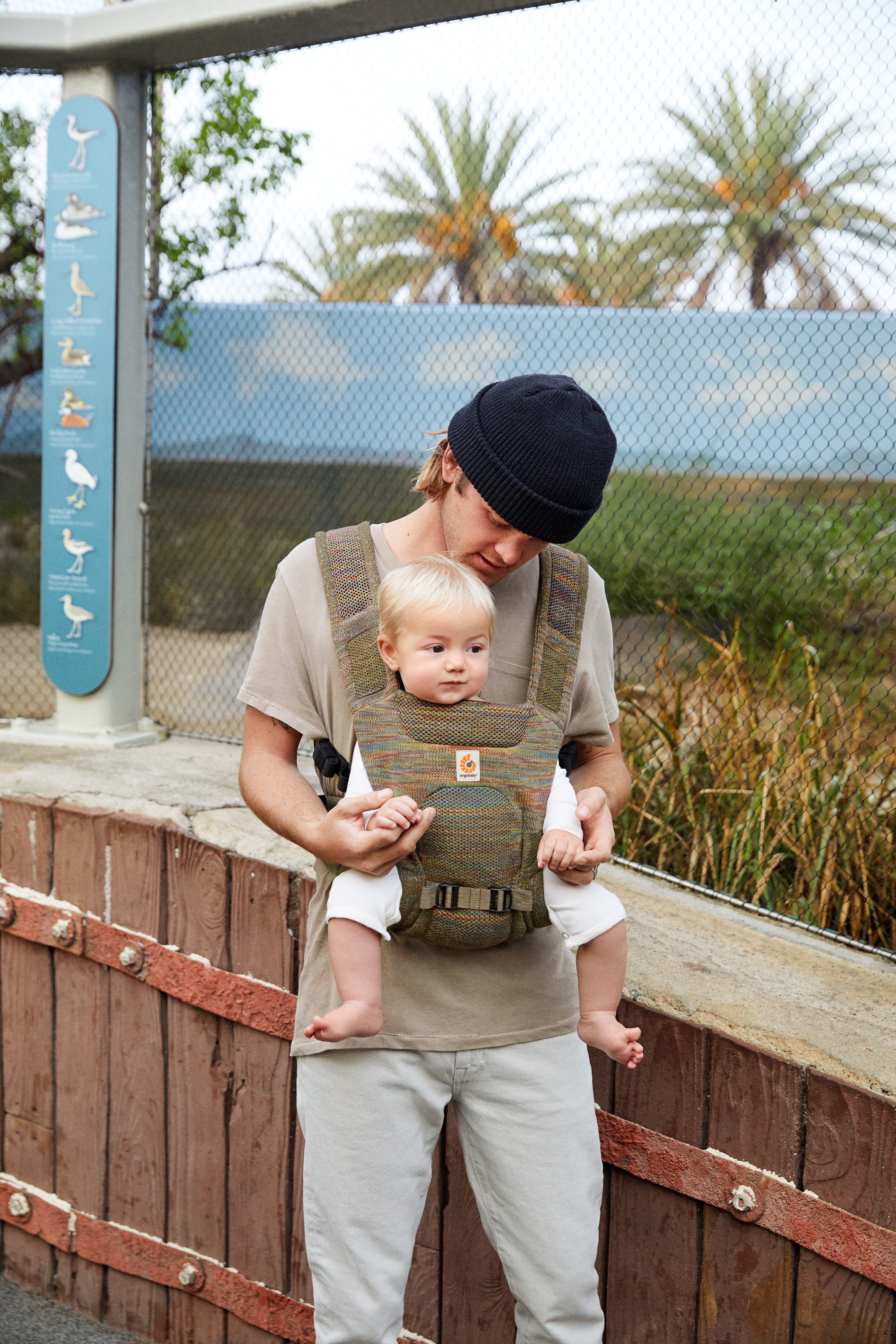Babywearing
Forward-facing babywearing used to be a controversial choice. We're going to shed some light on the topic and dispel some old myths. Concerns over comfort and safety date back to a time when there were no ergonomic baby carriers available, and the baby carriers used to allow baby‘s legs to dangle when carried.
With the invention of our Omni carriers, the ergonomic forward-facing carry really shows what it can do. It makes parents' and caregivers’ everyday lives so much easier, promotes joint activity with your child in all environments, and is very practical.
All of our baby carriers have been tested and certified by both the AGR (Aktion gesunder Rücken e.V.) campaign for healthier backs and the International Hip Dysplasia Institute, offering you total peace of mind when it comes to ergonomic positioning in all carry positions.
Forward-facing is no exception, and as with any carrying position, there are a few things to consider—so here is an overview of the most important facts about carrying
How to Wear Baby in Hip Position
Have you tried a hip carry? This is a great option for babies over 6 months who want to see more of the world, but still cuddle in to mom or dad for comfort when they need to. It's also a great alternative to an outward facing carry.
Even better? Purchase a Hip Seat or Ring Sling! These carriers make the hip carry effortless and comfortable for baby and caregiver!
Emotional Benefits of Getting Outside
Spending time in nature with your baby can strengthen the bond between you. The simple act of holding your baby close, feeling their warmth, and sharing new experiences together can create strong emotional connections. It’s also a wonderful way to reduce stress and improve your mood. When my littles were extra fussy, I’d take a walk around the neighborhood. Even though I don't live in an area with trails and surrounded by nature, simply behind outside changed everything. A little vitamin D does wonders!
Cognitive Development
Nature is a sensory wonderland
How to Relieve Back Pain from Carrying a Baby
Carrying your baby is a beautiful way to bond, but it can also take a toll on your back if done incorrectly. Many parents experience back pain from carrying a baby when the carriers are used improperly. The constant lifting, holding, and feeding positions can lead to muscle strain and discomfort.
If you're wondering how to relieve back pain from carrying a baby, you’re in the right place! In this guide, we’ll share practical solutions for pain relief, tips for preventing back strain, and when to seek medical advice.
Tips for How to Relieve Back Pain from Carrying a Baby
If you’re experiencing mid back pain from carrying a baby, or pain in your lower or upper back, here are effective ways to find relief:
1. Adjust Your Babywearing Posture
Wearing your baby incorrectly can strain your spine. When using a baby carrier, ensure:
✔️ Your baby is high enough to kiss the top of their head
✔️ Their legs are in an "M" position, with knees
Ergobaby Baby Carriers for Plus Size Parents: How to Find the Right Carrier
Babywearing for Every Body
One of the greatest things about babywearing is that it’s for every baby and every body. Finding the best baby carrier for plus size parents is all about fit, adjustability, and comfort—regardless of body shape or size.
At Ergobaby, we understand that every body is unique, which is why we’ve designed our carriers to be inclusive, adjustable, and ergonomic. Whether you’re looking for a plus size baby carrier for everyday errands, hiking, or snuggling your newborn at home, we’ve got you covered.
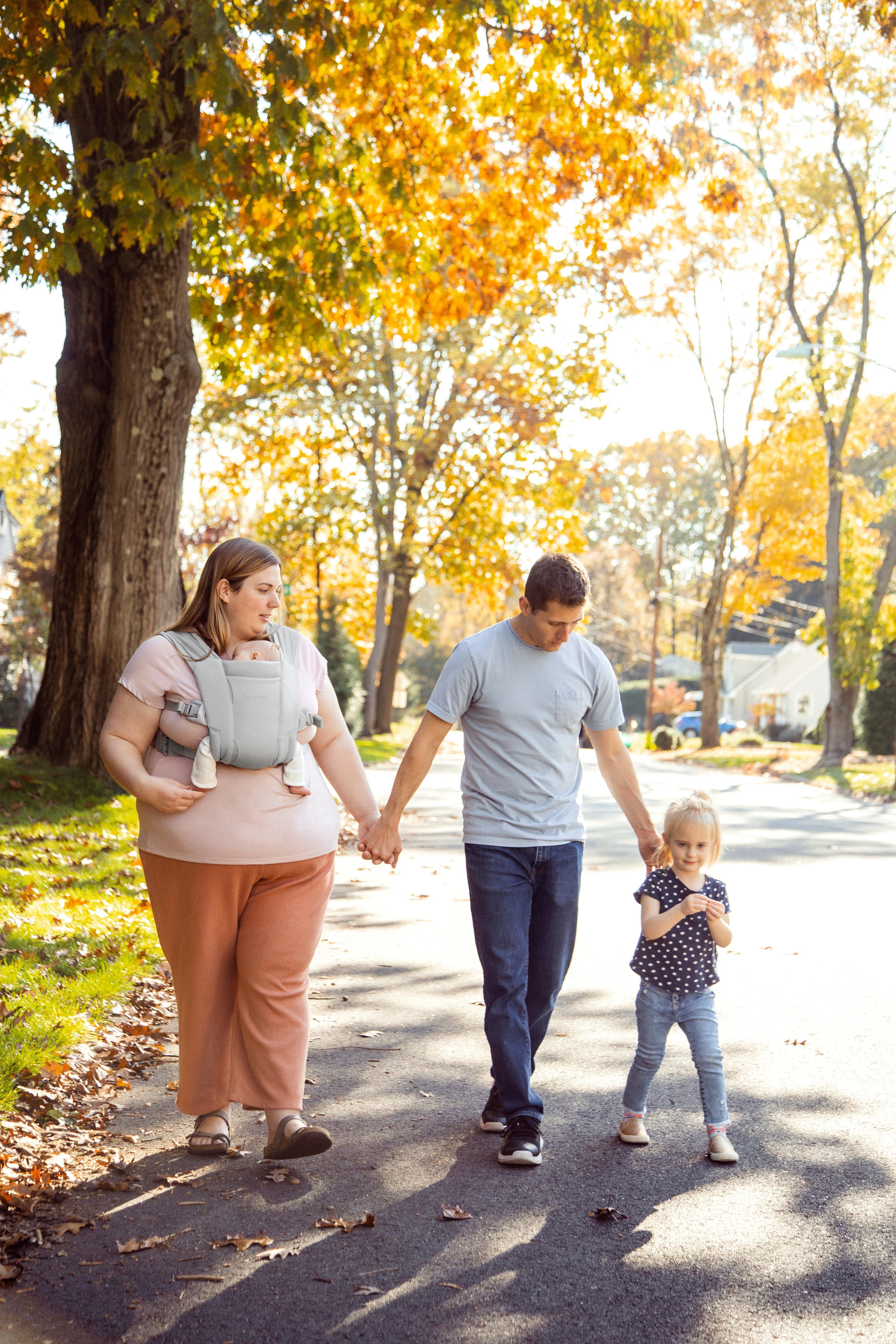

What to Look for in a Plus Size Baby Carrier
When choosing the best baby carriers for plus size moms or any plus size parent, here are a few key factors to consider:
1. Waistband Size & Adjustability
A longer waistband ensures a comfortable and secure fit. Since 2012, Ergobaby has increased the webbing length on all baby carriers to 55 inches, making our carriers more size-inclusive than
Baby Wrap vs Carrier: Find the Right Babywearing Option for You
Choosing between a baby wrap vs carrier can be a big decision for parents who want to keep their little one close while staying hands-free. There are so many reasons to wear your baby, but choosing the right carrier can be overwhelming. Each option offers unique benefits, and the right choice depends on your lifestyle, baby's age, and personal comfort preferences.
In this guide, we'll compare baby wraps vs carriers, explore their pros and cons, and help you decide which one (or both) best suits your needs.
What are the different types of baby carriers?
Baby carriers come in different styles, each designed to offer a secure and comfortable way to carry your baby. While baby wraps fall into their own category, structured baby carriers are more versatile and user-friendly.
Here are the main types of baby carriers:
1. Soft-Structured Carriers (SSCs)
These are the most popular and ergonomic carriers, featuring padded
Stroller vs. Baby Carrier: When to Use Each
As a parent, one of the biggest questions you’ll face when heading out with your little one is: Should I use a stroller or a baby carrier? Both options have their perks, but knowing when to use each can make all the difference in comfort and convenience.
Whether you're strolling through the park, navigating a crowded airport, or running errands, choosing between a baby carrier vs. stroller depends on your needs, your baby's age, and your lifestyle. Let’s explore the benefits of both so you can decide what works best for your family.
Emotional Benefits of Getting Outside
Spending time in nature with your baby can strengthen the bond between you. The simple act of holding your baby close, feeling their warmth, and sharing new experiences together can create strong emotional connections. It’s also a wonderful way to reduce stress and improve your mood. When my littles were extra fussy, I’d take a walk around the neighborhood. Even though I
How to Wash an Ergobaby Baby Carrier: Instructions & Tips
When your baby carrier is in daily use, it's bound to pick up spills, stains, and everyday messes. Whether it’s spit-up, snack mishaps, or a diaper emergency, keeping your Ergobaby carrier clean is key to maintaining its quality and comfort for both you and your baby.
In this guide, we’ll walk you through how to spot clean, machine wash, and properly maintain your carrier to keep it fresh and functional.
How often can I wash my carrier?
Ergobaby carriers are designed to be durable and easy to clean. While you don’t need to wash your carrier after every use, spot cleaning stains or areas of frequent contact is recommended to minimize wear and tear. We also recommend washing your carrier once before its first use. After that, only machine wash when absolutely necessary to protect the environment and extend the life of your baby carrier.
4 Best Baby Carriers for Newborns: How to Choose a Newborn Baby Carrier
When it comes to choosing the best baby carrier for your newborn, there are many factors to consider. From finding the right type of carrier to ensuring it provides the support and comfort your baby’s needs, this guide will walk you through the process of making the best decision for you and your little one.
Types of Newborn Baby Carriers
Baby carriers come in various styles, and not all are ideal for newborns. Here’s an overview of the different types of baby carriers:
1. Wrap Carriers
- What They Are: Long fabric pieces that wrap around your body to create a snug pouch for your baby.
- Best For: Skin-to-skin contact and closeness during the newborn stage.
- Key Features: Highly adjustable, suitable for small babies, and easy to store. Look for wraps designed for newborns to ensure proper support.
2. Ring Slings
- What They Are: A single piece of fabric threaded through two rings.
- Best For: Quick
4 Best Baby Carrier Accessories to Add to Your Wishlist
As a parent, comfort, convenience, and safety are key priorities when using a baby carrier. While Ergobaby’s baby carriers provide exceptional ergonomic support, certain accessories can make your babywearing experience even more seamless. Whether you’re looking to enhance your baby’s comfort, protect your carrier, or adjust it to suit different climates, baby carrier accessories can make a significant difference. Below, we’ve rounded up the 4 best baby carrier accessories that deserve a spot on your wishlist. Before you start using your baby carrier, there are a few things you should know. There are many different types of baby carriers. Deciding which one is right for you s largely based on personal preference or what you are using the carrier for. Learn more about the different types of baby carriers and how to wear them before finding your perfect accessories.
Why You Need Baby Carrier Accessories
Adding accessories
Bonding with Your Adopted Baby Through Babywearing
Welcoming an adopted child into your family is a beautiful, life-changing experience. As a parent, building a strong bond with your little one is not just something we all desire! It's also essential for their emotional well-being and development. While there are many ways to nurture this connection, babywearing offers a unique opportunity for bonding, especially for adoptive parents. Let’s see how to bond with your adopted newborn through babywearing.
What is Babywearing?
Babywearing refers to the practice of carrying your baby close to your body using a baby carrier, baby wrap, or sling. It’s a parenting tradition that has been embraced by cultures worldwide for centuries, allowing parents to keep their babies close while going about daily tasks. In recent years, babywearing has gained popularity for its many benefits, which go beyond convenience. Babywearing allows you to maintain physical closeness with your baby, which





